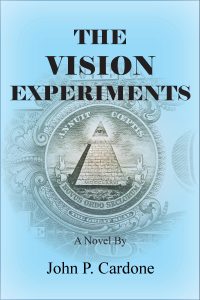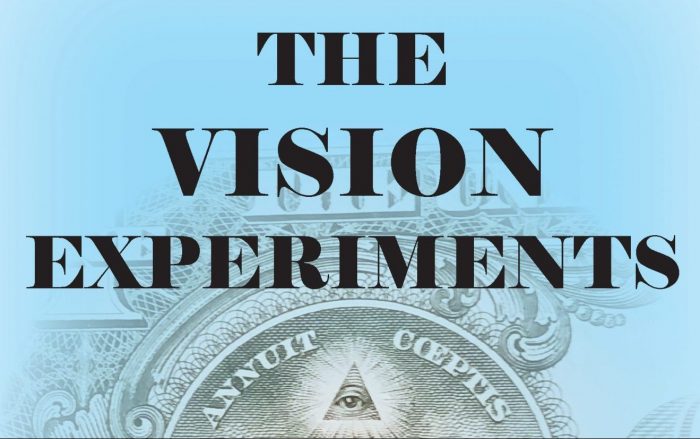Book Review: ‘The Vision Experiments’
Reviewed by Jeffrey Sanzel
Videre cras ante alli vivere: being able to see tomorrow before others live it.

John P. Cardone’s The Vision Experiments (Waterview Arts) is an entertaining thriller with a unique premise: What if the great minds and movers in history could see into the future? Speculation about figures such as Alexander the Great, Leif Erikson, Oliver Cromwell, Jonas Salk, J.P. Morgan, Thomas Edison, and Madam C.J. Walker form the hypothetical core of this unusual thesis. Explorers, inventors, and financiers—even the Oracle at Delphi—are part of the theoretical nucleus.
And while these individuals are referenced, the center of the novel focuses on the present-day work of the shadowy Fisher Research Institute, located in Los Angeles. Founded by Southampton billionaire Lawrence Fisher III, the medical lab uses homeless men to perform experiments to understand the phenomenon, all connected to various eye treatments. When the procedures fail, the clinic dispatches the men by making them seem victims of a satanic cult.
The Institute has employed Professor William Clarkson to recover documents throughout the world to prove and further the ideas. Clarkson began his work at the Penn Museum before taking a position at Stony Brook’s Southampton’s campus. From here, he was recruited by the Institute with “what was, in his mind, the possibility of altering the world in every possible way.” As an archaeologist and an expert in parapsychology, he presents the ideal “modern day Indiana Jones.”

Dr. Melissa Speyer, a speech-language pathologist, is dealing with her mother’s passing, a marriage ended by her husband’s departure, and both her father’s deterioration and refusal to go into much-needed care. While dealing with a possible eye infection, a pharmaceutical error provides her with eye drops that enable her to have visions of the future. This fluke comes to the attention of the Institute, resulting in Clarkson’s assignment to find out more. He approaches her, unaware that they will become emotionally involved.
Here the story kicks into high gear as Los Angeles detectives, as well as the FBI, begin an investigation of the Los Angeles laboratory. From Oxford, England, to Los Angeles to New York City to Long Island, the book zooms across the world in brisk, succinct chapters, intercutting the action in a cinematic fashion. There is a sizeable roster of well-developed characters revolving through the action, with Speyer and Clarkson’s burgeoning romance at the center.
Cardone has done his research, cleverly integrating the ideas behind the all-seeing eye symbol (best known for its placement on the dollar bill). In addition, there are connections to the Eye of Horus and the Staff of Asclepius, associated with the medical profession. Whether Cardone is imparting the background of symbols such as these or explaining forensic examination, he keeps the narrative moving briskly forward.
Elevating the novel is the ethical considerations in the use of knowledge: whether used for gain or good. Because there is the ability, does it justify the action? The Institute does its work in the name of science but in complete denial of any sense of humanity. Cardone addresses the moral dilemma of power, the individual, and society as a whole.
Those who enjoy speculative fiction and a solid, quick summer read will enjoy John P. Cardone’s The Vision Experiments.
Author John P. Cardone is the founder of the Long Island Authors Group, a nature photographer, a wildlife photography instructor, and a lecturer on nature topics. The Vision Experiments is his fifth book and is available at Book Revue in Huntington, Amazon.com and BarnesandNoble.com.







